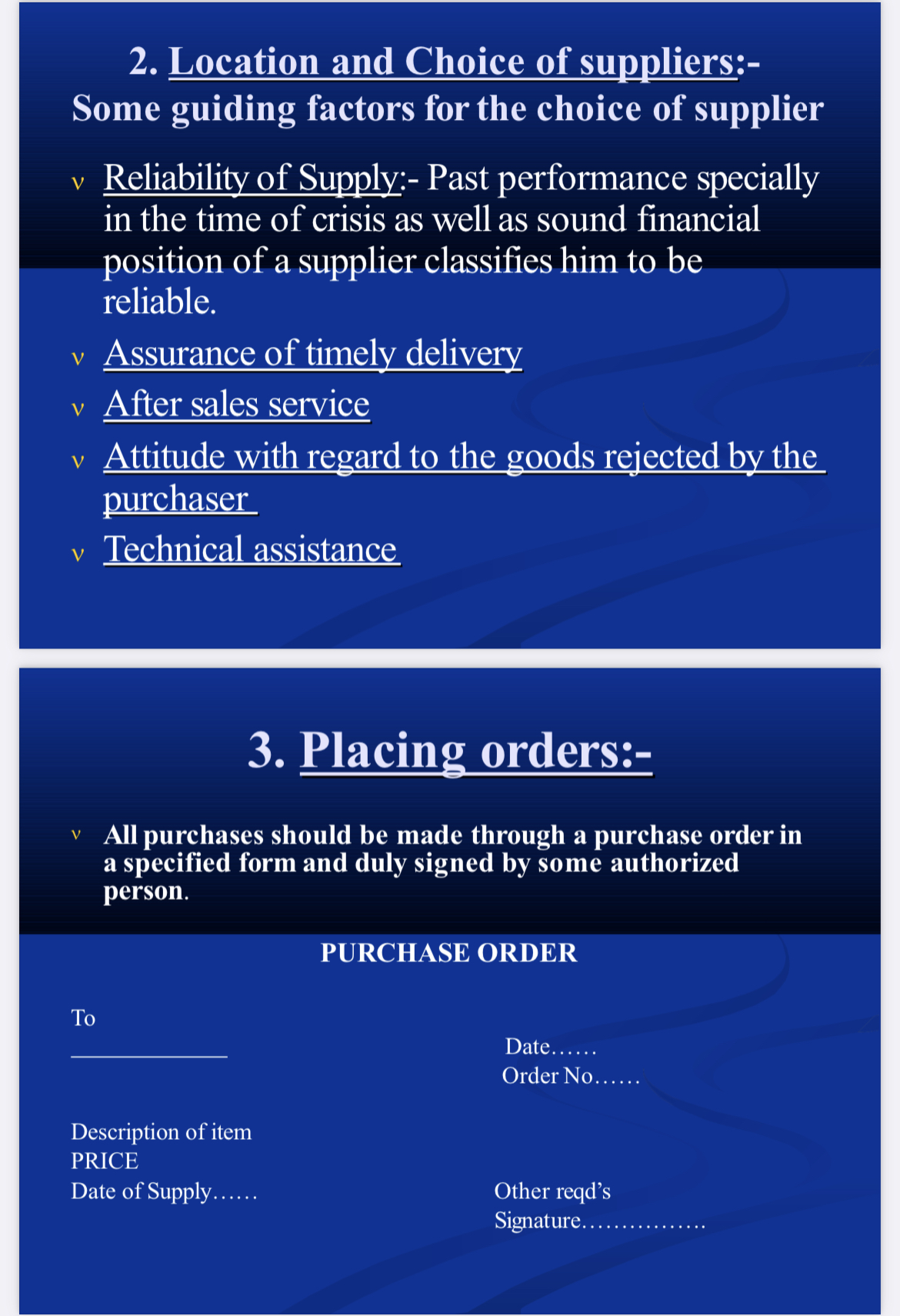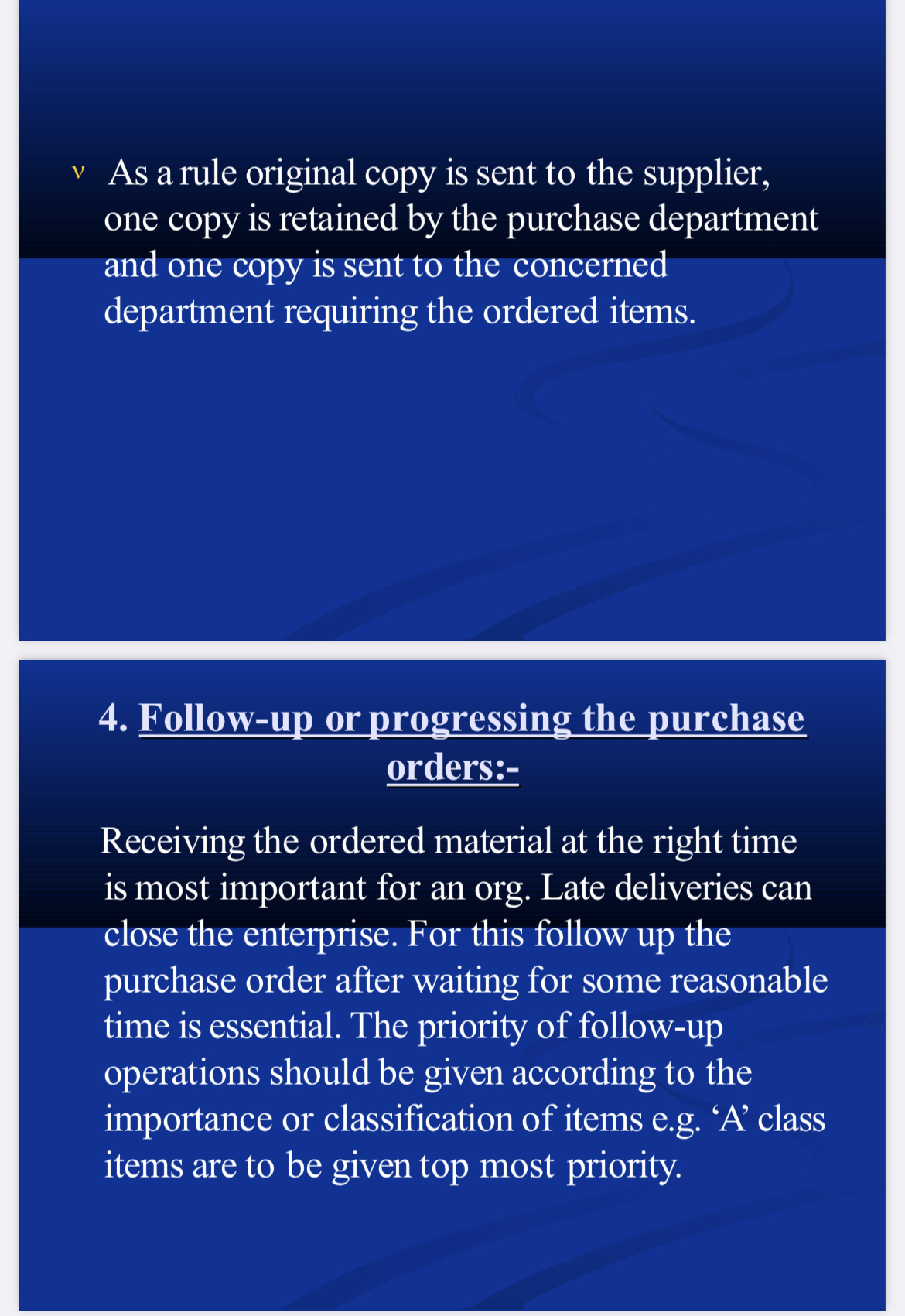Question
1 a reflection essay in detail on the topics discussed in class on Day1 and Day2 2. Topic- Purchasing and Procurement and their Role in
1 a reflection essay in detail on the topics discussed in class on Day1 and Day2
2. Topic-Purchasing and Procurement and their Role in the Supply Chain.
3.In your reflection include procurement strategiesand the phases of procurement cycle.
Day 1
I am writing down from which you have to make reflection
What Is Procurement?
Procurement encompasses a range of activities involved in obtaining goods or services.
What is the purpose of procurement?
In general, procurement teams work to obtain competitively priced supplies that deliver the most value. However, not all companies define procurement in the same way.
Many companies consider that procurement encompasses all the stages, from gathering business requirements and sourcing suppliers to tracking the receipt of goods and updating payment terms, while others define procurement as a narrower range of activities, such as issuing purchase orders and making payments.
Key Takeaways
- Procurement is a vital business function. When managed efficiently and done well, it can help increase your business's profitability.
- It includes a range of activities involved in obtaining goods and services, including sourcing, negotiating terms, making purchases, tracking when supplies are received and maintaining records.
- It's important to continuously monitor and assess the procurement process to improve any weak spots or inefficiencies.
- Technology can reduce procurement cost and administrative overhead by automating and tracking procurement processes.
Procurement Explained
Traditionally, some businesses have used the term procurement synonymously with purchasing. But now, purchasing is often seen as just one stage in a larger, more strategic procurement process. So, what exactly is procurement?
Procurement involves every activity involved in obtaining the goods and services a company needs to support its daily operations, including sourcing, negotiating terms, purchasing items, receiving and inspecting goods as necessary and keeping records of all the steps in the process.
Why Is Procurement Important in Business?
Procurement is an important step inunderstanding supply chains, because it helps a company find reliable suppliers that can provide competitively priced goods and services that match the company's needs. That's the case whether the company is seeking raw materials for manufacturing, a marketing services provider or new office supplies.
For example, if a company needs a new supplier to provide an ongoing service for an indefinite period of time ? such as an email security solution ? the procurement process helps the company choose the supplier that best meets all of the business's requirements at a reasonable price. It enables the business to avoid wasting time, money and valuable resources dealing with an inadequate supplier.
Minimizing cost is one important aspect ofimproving your procurement processes. But it's also vital to identify suppliers that provide the quality of goods and services that the company needs and have the capacity to deliver reliably and a track record of doing so.
Types of Procurement
Procurement can be categorized in several ways. It can be classified as direct or indirect procurement, depending on how the company will use the items being procured. It can also be categorized as goods or services procurement depending on the items that are being procured.
- Direct procurementrefers to obtaining anything that's required to produce an end-product. For a manufacturing company, this includes raw materials and components. For a retailer, it includes any items purchased from a wholesaler for resale to customers.
- Indirect procurementtypically involves purchases of items that are essential for day-to-day operations but don't directly contribute to the company's bottom line. This can include anything from office supplies and furniture to advertising campaigns, consulting services and equipment maintenance.
- Goods procurementlargely refers to the procurement of physical items, but it can also include items like software subscriptions. Effective goods procurement generally relies on good supply chain management practices. It may include both direct and indirect procurement.
- Services procurementfocuses on procuring people-based services. Depending on the company, this may include hiring individual contractors, contingent labor, law firms or on-site security services. It may include both direct and indirect procurement.
Types of Procurement
| Direct Procurement | Indirect Procurement | Goods Procurement | Services Procurement | |
|---|---|---|---|---|
| What is it? | Any good or service required to produce an end product | All non-production-related goods or services | Physical items typically held as inventory, whether for direct or indirect procurement purposes | All people-based services procured, whether for direct or indirect procurement purposes |
| Examples | Raw materials, components and parts, machinery, items purchased for resale | Office supplies, marketing services, utilities | Raw materials, wholesale items, office supplies | Law firms, contractors, contingent labor, on-site security services |
How Procurement Works
The procurement process generally involves a number of steps. The business identifies particular goods and/or services that it needs, sources the suppliers that will help the company reach its business objectives, negotiates terms and costs and then purchases and receives the relevant items.
A small company may have just one person handling procurement of all goods and services. Larger companies may have a team of people specialized in dealing with different suppliers or supporting specific internal business groups. For some items, the team may need to gather input from several different business groups in order to determine the company's overall requirements.
It's important to remember that procurement doesn't consist of a series of isolated acts ? it's an ongoing process. For example, businesses generally aim to establish relationships with key suppliers to help obtain the best service and lowest possible costs, which ultimately translate into higher profit margins. Companies may also need to conduct regular quality assurance checks and performance analysis to make sure suppliers consistently meet expectations.
9 Steps in the Procurement Process
Procurement processes vary greatly depending on each company's structure and needs, but generally include the following nine core steps:
1. Identify which goods and services the company needs.First, a business must identify its requirements for a specific item or a service. This may be a new item that the company hasn't previously purchased, a restock of existing goods or a subscription renewal. This step typically involves delving into the nitty-gritty details of what the business needs, such as the precise technical specifications, materials, part numbers or service characteristics. At this stage, it's a good idea to consult all business departments affected by the purchasing decision to ensure the procured items accurately reflect the needs of each department.
2. Submit purchase request.When an employee or business group needs to procure a significant quantity of new supplies or services, they make a formal purchase request (also known as a purchase requisition). A purchase request notifies the company that a need exists, usually via department managers, purchasing staff or the financial team, as well as specifications such as price, time frame needed, quantity and other important things for the purchasing team to keep in mind. The department overseeing the purchase can then approve or deny the purchase request. If approved, the procurement team can proceed with selecting a vendor and making the purchase.
3. Assess and select vendors.With a clear list of requirements and an approved purchase request, now is the time to find the best vendor and submit a request for quote (RFQ) - this is what the purchasing team sends to potential suppliers in order to receive a quote - it is important to be as detailed as possible so you can compare apples to apples. Vendor assessment should focus not only on cost but also on reputation, speed, quality and reliability. Many companies consider ethics and social responsibility as well, since procurement is often intertwined with corporate identity. A retailer that prides itself on sustainability would stand to benefit from partnering with environmentally responsible suppliers, for instance.
4. Negotiate price and terms.A common best practice is to get at least three quotes from suppliers before making a decision. Examine each quote carefully and negotiate where possible. If you need to walk away from a deal, be sure that you have concrete alternative options. Once you've agreed on final terms, be sure to get them in writing.
5. Create a purchase order.Fill out a purchase order (PO) and send it to the supplier. The PO should be sufficiently detailed to identify the exact services or goods needed and to enable the supplier to fill the order.
6. Receive and inspect the delivered goods.Carefully examine deliveries for any errors or damage. Make sure everything is delivered as specified in the PO and that the quality meets or exceeds expectations.
7. Conduct three-way matching.Accounts payable should conduct three-way matching by comparing the purchase order, order receipt or packing list and invoice. The goal is to ensure the goods or services received match the purchase order and to prevent payment for unauthorized or inaccurate invoices. Highlight any discrepancies between the three documents and resolve issues before arranging payment.
8. Approve the invoice and arrange payment.If the three-way match is accurate, approve and pay the invoice. Businesses should strive to have a consistent invoice payment process throughaccounts payablethat checks that payments match the invoice amount and due date. A standardized process can help make sure invoices are always paid on time, which can prevent late fees and build good relationships with suppliers.
9. Recordkeeping.It's important to maintain records for the entire procurement process, from purchase requests to price negotiations, invoices, receipts and everything in between. These records may be useful for multiple reasons. They help the company reorder goods at the right price in the future, as well as assist with auditing processes and calculating taxes. Clear, accurate records can also help resolve any potential disputes.
Stages of Procurement
The nine major steps of the procurement process can also be thought of in three distinct stages: the sourcing stage, the purchasing stage and the receiving stage.
- Sourcing stage:This covers the initial steps in which the business identifies its needs, creates a purchase request and assesses vendors. Even after the initial sourcing steps are complete, it's a good practice to build a strong relationships with suppliers. They can establish grounds for suppliers to learn from partners, improve products and processes and develop trust.
- Purchasing stage:This stage includes negotiating terms, creating orders and receiving and inspecting goods and services.
- Payment stage:Accounts payable conducts three-way matching to ensure order and invoice accuracy. The invoice can then be approved and the payment is arranged. Records of all invoices, orders and payments should be kept and carefully maintained.
Procurement Life Cycle
Organizations commonly think of steps in the procurement process as a life cycle. This perspective provides a reminder that all the tasks and stages in the procurement process overlap and rely on each other and that the process is continuous. A carefully thought-out procurement life cycle also recognizes the integration between the process and the business as a whole, including the need to align with existing company rules and procedures covering areas such as budgeting. The process is not always linear, and sometimes adjustments need to be made to account for a dynamicdigital supply chainwith shifting suppliers, availabilities and costs.
Three Components of Procurement
Three key components work together to make the procurement process happen: people, process and paperwork.
- People:People generally are responsible for initiating or authorizing every step of the procurement process. In addition to procurement specialists, the people involved include other stakeholders, such as accounts payable and the business groups that request the goods and services. The number of people involved often depends on the value of the goods and services; more stakeholders may be involved in specifying and approving high-value purchases.
- Process:An effective procurement process can help a company succeed by keeping costs down and ensuring supplies arrive when the business needs them. A well-designed and methodical process helps to promote accuracy and timeliness because every person involved knows exactly what they need to accomplish and how long they have to complete the tasks. In contrast, a disorganized procurement process results in inefficiencies and potentially costly errors. Overpayments, for example, can impact the bottom line, while late payments negatively affect relationships with suppliers.
- Paperwork:It's important to maintain records for every stage of the procurement process and ensure they are easily accessible. These records act as a store of organizational knowledge about payment terms and supplier performance, helping the business maintain an efficient procurement process ? even if the procurement staff changes over time. In the case of an audit or a dispute, a business must be easily able to follow the paper or electronic trail through each stage of the procurement process.
Procurement, Purchasing and Supply Chain: What's the Difference?
The terms procurement, purchasing, sourcing and supply chain are often used interchangeably. However, there are important distinctions between them.
- Procurement vs. purchasing:If procurement involves purchasing, you might be wondering: What's the difference between purchasing and procurement? The answer is that purchasing is essentially transactional, focusing on managing specific orders to meet company needs. Procurement is a much broader and more complex set of processes, including establishing and maintaining supplier relationships. Another way to think about the difference between purchasing and procurement is that procurement takes a proactive approach that starts with analyzing the company's needs, whereas purchasing is a reactive approach ? simply focusing on obtaining what the company has already decided it needs.
- Procurement vs. sourcing:Sourcing, like purchasing, is onlypartof the overall procurement process. Sourcing is an early stage of the procurement cycle. It encompasses activities such as identifying and assessing potential suppliers of goods or services, negotiating terms and selecting the vendors that best meet the company's needs.
- Procurement vs. supply chain:Procurement covers one aspect of supply chain management. Procurement includes sourcing, obtaining and paying for goods and services. Supply chain management also covers the logistics involved in obtaining goods, such as shipping and warehouse management, as well as transforming the procured goods into products and distributing them to customers.
Procurement, Purchasing and Supply Chain: What's the Difference?
| Procurement | Purchasing | Sourcing | Supply Chain Management | |
|---|---|---|---|---|
| Definition | All activities related to carefully sourcing and obtaining goods and services needed to support business operations | Buying goods and services | Selecting and vetting vendors to provide goods and/or services | Managing the coordinated network of companies, facilities and business activities involved in sourcing, developing, manufacturing and delivering products |
| Scope | Includes sourcing, negotiation, purchasing, receiving and recordkeeping | Part of the procurement process | Part of the procurement process | Includes the entire procurement process |
| Focus | Ensuring the company gets the most value from goods or services to increase the business's profitability | Usually focuses on getting a good price | Establishing good, long-term relationships with suppliers | Cutting costs while getting goods to the customer as quickly as possible, without sacrificing quality or accuracy |
Principles of Procurement
In public-sector organizations, the procurement process is generally similar to the process in private-sector organizations ? but with a few important differences. Because the people involved handle public funds, they generally must follow rigorous principles during the procurement process. These principles can be regarded as an ethical code of conduct that holds public servants accountable for their purchases. Some of the principles may also be beneficial to private-sector organizations.
The principles vary somewhat depending on the organization. Here are seven of the most common procurement principles:
- Value for money:The organization must manage funds efficiently and economically when procuring goods and services. This may include conducting cost-benefit analyses and risk assessments. It's worth noting that low cost does not necessarily equate to greater value; characteristics such as quality and durability also factor into determining whether the purchase represents value for money.
- Fairness:Procurement should not provide preferential treatment to individuals or suppliers. All bids should be assessed objectively, based on how well they meet the organization's needs.
- Competition:Organizations should seek competitive bids from multiple suppliers, unless there are specific reasons not to do so, such as a sole-source provider where the good or service is only available from a single vendor.
- Efficiency:Procurement processes must be carried out efficiently to help maximize value and avoid delays.
- Transparency:Organizations should make relevant procurement information available to everyone, including the public as well as suppliers. Information should be kept confidential only when there are legal or other valid reasons to do so.
- Integrity:Those who practice public procurement should always strive to be perceived as trustworthy, reliable, honest and responsible. Funds must be used for their intended purpose and in the public interest.
- Accountability: They are required to report procurement activities accurately, including any errors.
Day 2






Step by Step Solution
There are 3 Steps involved in it
Step: 1

Get Instant Access to Expert-Tailored Solutions
See step-by-step solutions with expert insights and AI powered tools for academic success
Step: 2

Step: 3

Ace Your Homework with AI
Get the answers you need in no time with our AI-driven, step-by-step assistance
Get Started


